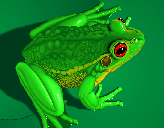|
|
|
|
|
Principles of Ecology: Lesson One Organisms and Their Environments |
|||||||||
|
|
To complete this lesson you must successfully work through the activities below. You must complete each one before moving on to the next. Focus on providing me with responses that are complete and of high quality. Be sure to read through all the information below before starting activity one. Life on earth extends from the ocean depths to a few kilometers above the earth's surface. Within this thin and fragile space called the biosphere, all of life's struggles for survival take place. The biosphere is an extremely complex system and is difficult to understand. To better understand how millions of diverse species live together in the biosphere, ecologists divide it into smaller, more easily studied units. These units are called ecosystems. An ecosystem is a physically distinct, self-supporting unit of interacting organisms and their surrounding environment. A forest, for example is an ecosystem. Its physical boundaries are the areas where the trees give way to other types of vegetation. A forest is considered self-supporting because plants change energy from the sun into chemical energy. Forest animals then eat the plants and are eaten by other animals, thus transferring energy from one organism to another. When forest plants and animals die, their bodies are decomposed by microorganisms, and the chemicals released by this decomposition are then reused by other living things. By these four processes -
an ecosystem like the forest sustains itself year after year. An ecosystem consists of two sets of environmental factors. The biotic factors are all of the living organisms. An ecosystem contains many species of organisms. Some are easily seen, such as a dog or a maple tree and some are not visible without a microscope. Abiotic factors are the nonliving parts of the ecosystem. These factors include light, temperature, water, wind, soil, and various nutrients.
|
||||||||


